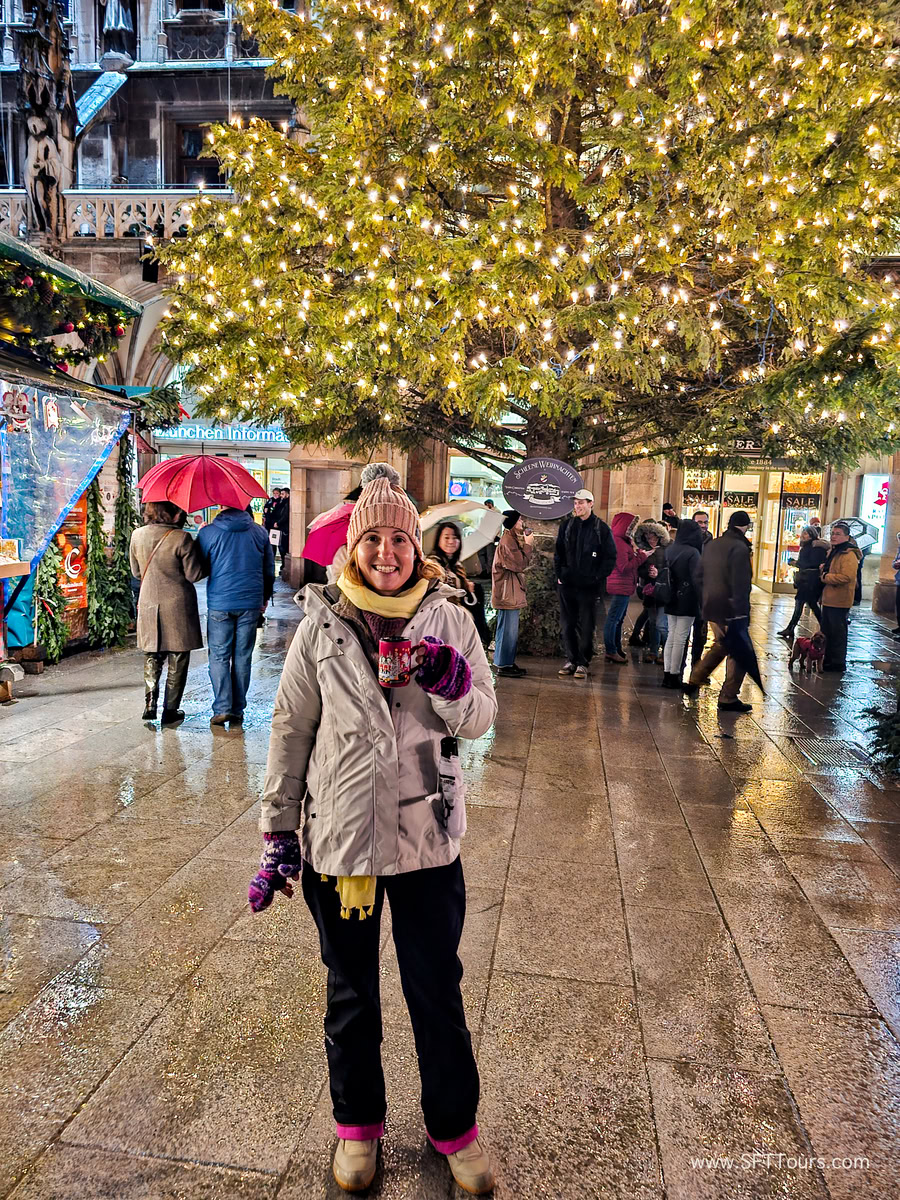Wondering what to pack for our European Christmas Market tour? Going on your own holiday adventure to explore the Christmas markets in central Europe?
In this article you’ll find an intro to the weather in Central Europe in the Christmas markets period from the end of November to just before Christmas, and a handy list of suggestions for things women should pack for this trip.
The weather in Central Europe in November and December
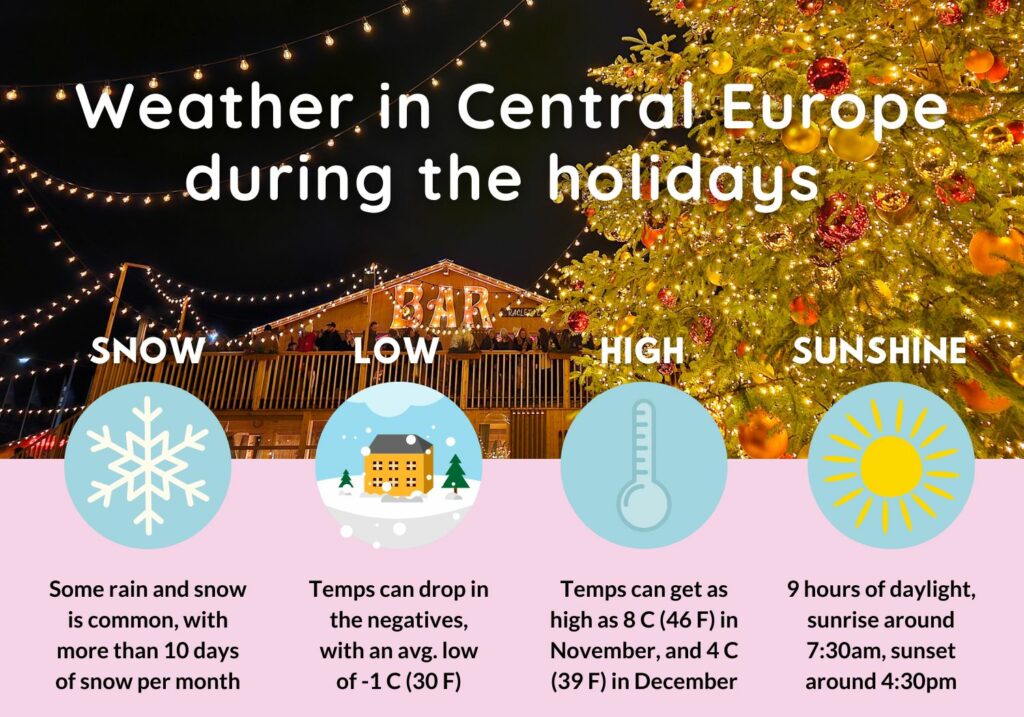
Christmas markets in Central Europe run for a month from the last week of November until just before Christmas.
In other parts of Europe that follow Christian Orthodox traditions, such as the Balkan and Caucasus countries as well as Greece, the markets will remain open until their celebrations end in the first week of January, but in central Europe, where Catholic and Protestant traditions are the norm, the markets close just before Christmas.
Despite the winter season doesn’t officially start until the 21st of December, when the markets are about to close for the year, the weather conditions in cities like Munich, Nuremberg, Strasbourg, or Vienna, are already what one would consider winter: cold, windy and most likely, snowy.
This means that you need to be prepared for the following:
- Temperatures that can range anywhere from -10 C (14 F) to 10 C (50 F), but will mostly stay around 4-5 C (39 F- 41 F) during the day, and 0 C to -2 C (32 F-30 F) at night.
- 9 hours of daylight, giving you enough time to do some sightseeing or day tours, before the sun sets and the Christmas lights turn on between 4pm and 5pm.
- Variable conditions that can go from sunny to snowy, windy to rainy, depending on the specific city, its closeness to the sea, its altitude and its geography. As this time is a transition period between the crisp fall and the cozy winters, the weather tends to be a bit more unpredictable and change throughout the day.
- Its fair share of snowfall, with up to 10 days with some snow in some cities like Munich, and the first snowfall of the year bringing logistical challenges to airports, roads and cities. This adds to the holiday atmosphere, but can also bring back memories of muddy slush or ice on streets or sidewalks.
Though Central Europe isn’t notably windy, as with anywhere, wind can occur and it’s safe to say you could add a degree or two to how cold it may be due to the windchill effect.
If you’re from somewhere warm or tropical, and need a shopping list of items to purchase (or borrow from a friend) for the colder Christmas season, or you just need some outfit inspo for your Christmas market outfits, below are a few must-have items in your suitcase when you come to Central Europe during the holiday season.
How to dress to enjoy the Christmas markets
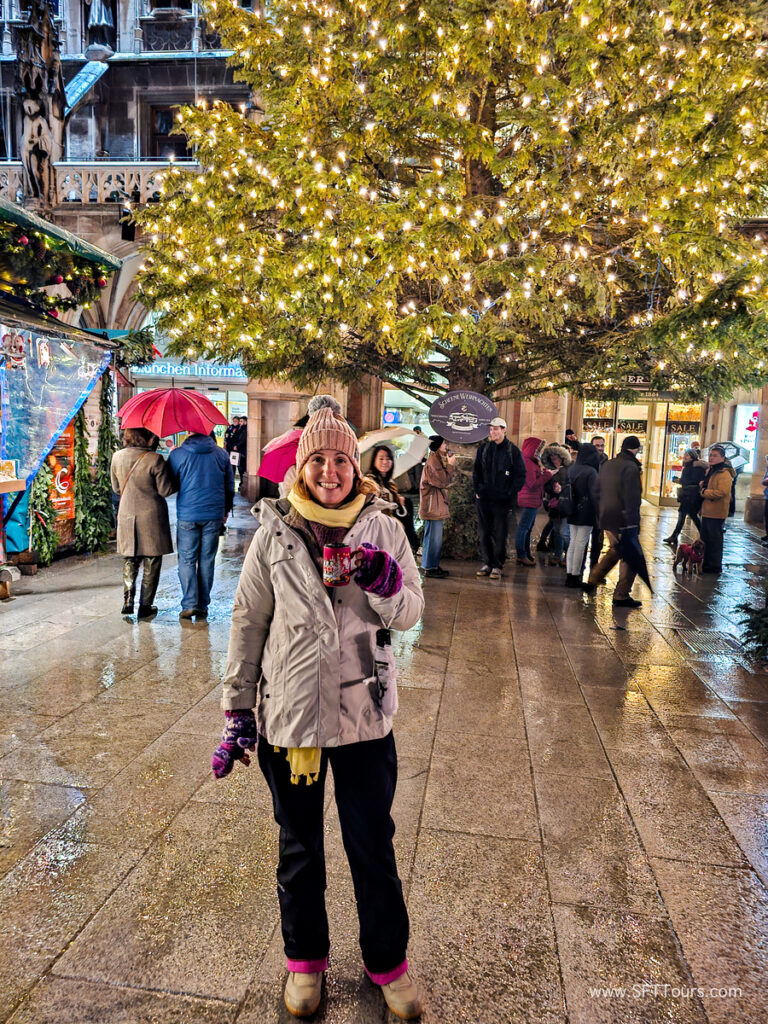
Now that you know what the weather will be like in Central Europe during the Christmas markets, let’s talk about some guidelines and suggestions to help you pack.
Bring layers
The most important factor when deciding what to wear when exploring the Christmas markets tours is layers, layers, layers!
This applies to traveling to any cold-weather country, but is particularly important during this time of year in Central Europe when the weather is variable and you will spend time both outdoors and indoors, where there is powerful heating.
At the minimum, we suggest wearing a warm sweater under a warm winter jacket, preferably waterproof for the snowy (or maybe even rainy) conditions at this time of year. A warm and waterproof pair of boots will get you through the festive streets, while scarfs, gloves and beanies help to accessorize your outfit while keeping you warm.
If you’re visiting from a warm or tropical country, don’t be afraid to wear base layers under your outfits to make sure you are as comfortable as you can be – you won’t enjoy the magical winter atmosphere if you can’t feel your feet or hands.
Casual, practical attire
In the winter, locals tend to dress for comfort and warmth rather than to show off their outfits.
You will be walking around quite a bit from market to market or stall to stall, it will be cold and it may be icy or slippery. You will need to use your hands to eat, drink or pay for items, and you will most likely be standing, as most markets have tall tables but rarely any chairs.
Dress practically, with clothes that make you feel comfortable and you can stand and walk around in for a couple of hours when temperatures are dipping close to freezing.
Most locals head to the markets after work for a drink with friends, so you are likely to see plenty of office attire.
If you’d like to dress up, consider a cute hat or scarf or an elegant long coat.
Hoodies and hats
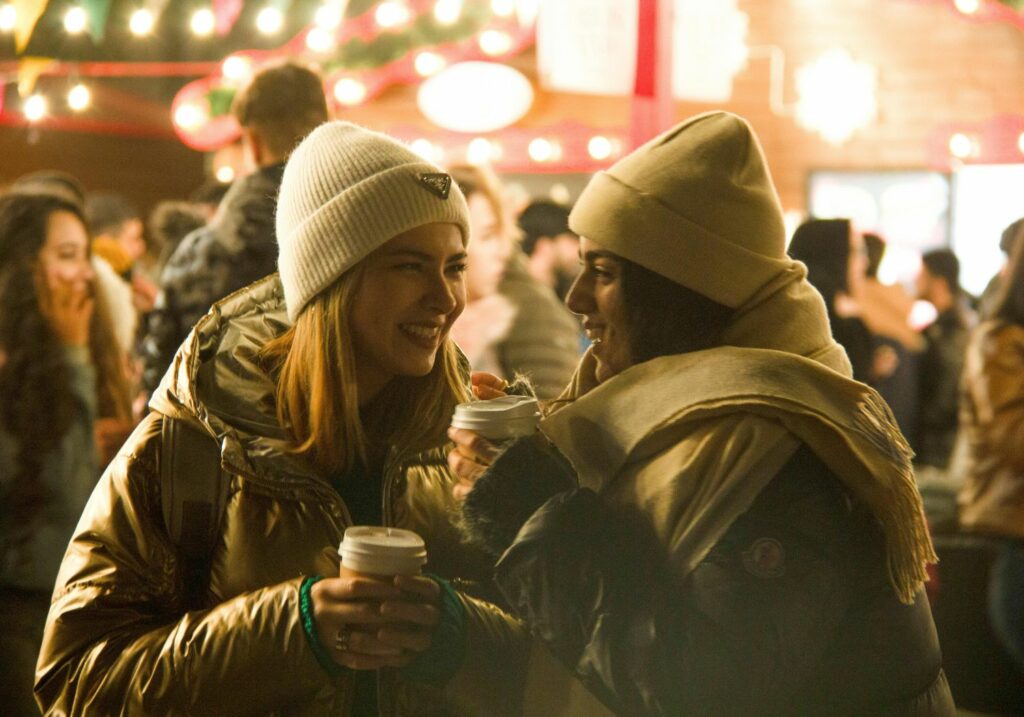
You lose a lot of body heat if your head is not covered so you should wear a hat and pack a jacket with a hoodie. Most hats won’t keep you dry if it starts to rain and water will still slip inside your jacket. You can pack a hat and pull your jacket hoodie up over your hat in case it starts to rain.
If you plan to do that, bear in mind that the hoodie needs to be oversized so it can fit your hat, or your hat small enough to fit inside your jacket, without pulling and making you uncomfortable.
What about colors?
Winter fashion is always darker than summer and favors black, and shades of gray, brown, burgundy and maroon.
This makes sense because they are colors that can more easily hide stains from mud, slush or rainfall, but they tend to bring the entire mood down and are hard to stand against the white and black landscapes.
I always like to add a dash of color to my winter outfits, be it by wearing a jacket that is not black, or by adding a brighter hat or scarf to the mix.
What to pack for a trip to the Christmas markets
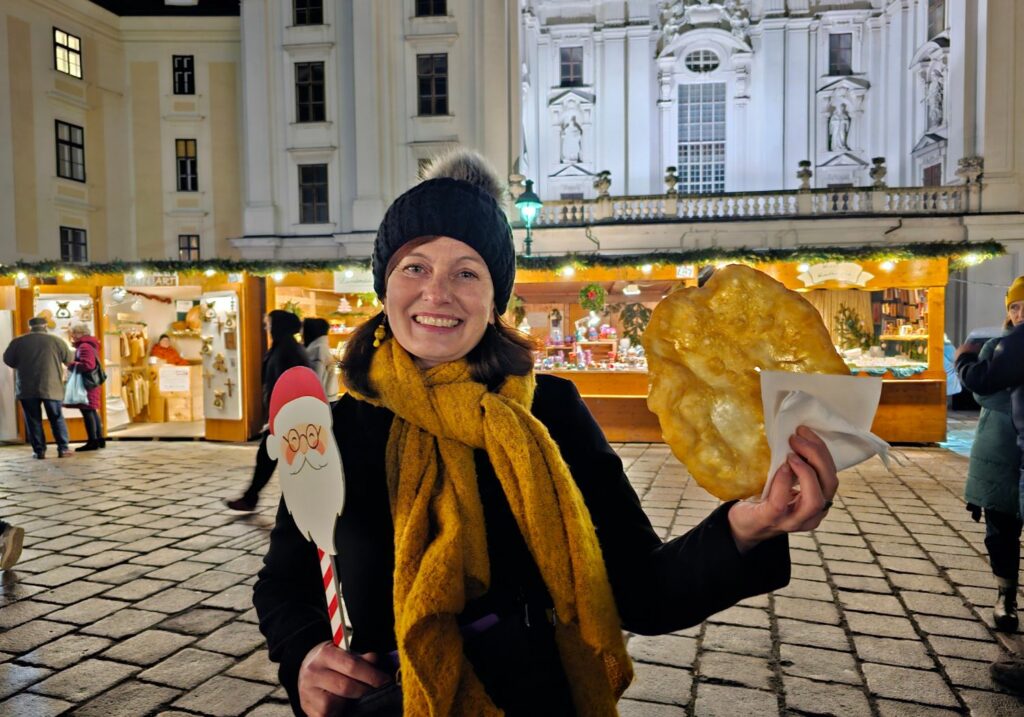
Below is a list with suggestions for what to wear in Central Europe in November and December. Further down, you will also find a list of other things to bring specifically on our tour.
Base layer
When it’s cold and you’re planning to spend quite some time outside, a good base layer of merino wool is a must.
If you are not familiar with merino wool, this kind of wool most commonly comes from Australian and New Zealander merino sheep, and is the softest and highest performance fabric there is.
Its properties make it a fantastic companion for travel in general and for cold destinations and I can testify to its benefits:
- It is extremely soft, so doesn’t have the rough feeling of other kinds of wool.
- It is flexible, so it moves with you.
- It has natural climate control, so keeps you warm in winter and cool in the summer, and it is usually sold in various thickness levels so you can wear it all year round.
- Moisture-wicking so it repels sweat and rain.
- Requires very little care, with most garments being machine washable, and is extremely durable.
- It promotes an anti-microbial environment so doesn’t have bad odor, even if you wear it for a few consecutive days.
This is an expensive material, but is well worth it and will last you many years. I am still wearing the base layers I purchased for a trip to Iceland in the winter in 2017 on all my cold weather trips.
You can check base layers from merino.tech or Icebreaker, the brand I use and can recommend.
Waterproof outer layer
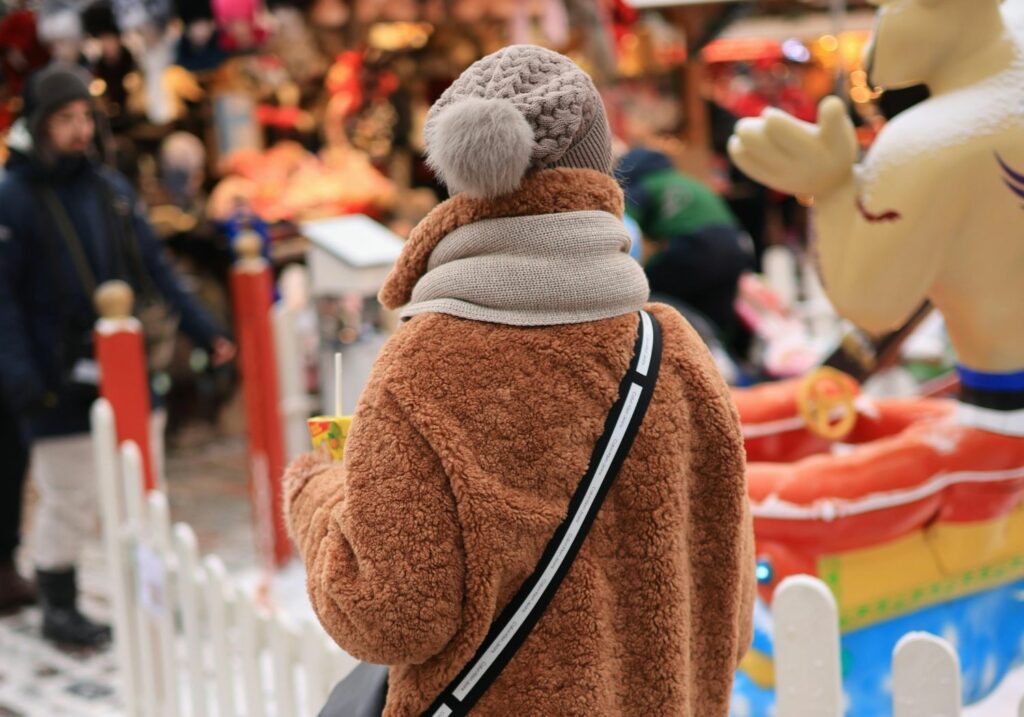
The most important item you’ll bring on your grand Christmas market tour is a warm, waterproof outer layer.
You will wear this everyday to stay comfortable and dry, and it can make or break your experience and force you to run for shelter or let you stay out no matter the weather conditions.
A long reversible puffer jacket / fleece coat like this one offers a touch of sophistication while keeping you nice and cozy, and the reversible option lets you change up your outfits and feel as if you had two coats while only having to carry one. Fleece outers are not waterproof, but will take a reaosnably long time before it soaks, keeping you dry even if it starts to drizzle.
Alternatively, a puffer waterproof jacket with a hoodie to protect from any rain is a fashionable option if you don’t get easily cold.
As the temperatures dip, it’s smart to bring along a thick and really warm down or faux-down jacket. Get one that reaches until above the knee or go full length if you are someone who gets cold easily.
I also recommend for the jacket to be rather long like this one, ideally reaching just above your knees, so that your legs don’t get wet in the snow, and for it to have a hood so your head can stay warm too.
Sweaters
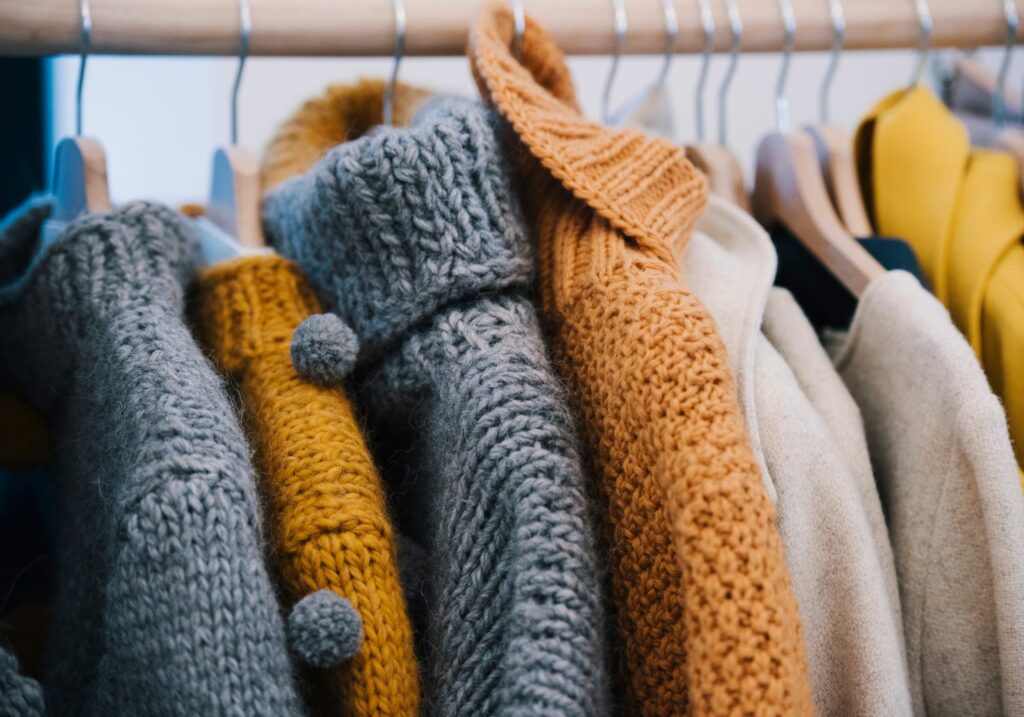
Sweaters are an essential part of your winter packing list.
There are almost too many options for this layer – knit sweaters, cashmere, sweater dresses, sweater vests over a long sleeve shirt, turtle neck… The list goes on.
This is where you have a lot of freedom to tailor this layer to your tastes and express yourself while staying warm.
We love longer options like this one that almost act as a dress over a nice warm pair of insulated leggings.
Cardigans are also a great addition to any outfit to add dimension to your outfit, and give you another layer to put on or take off as the weather requires.
You also can’t go wrong with a turtleneck option, either tight to tuck into your trousers, or thick and flowy for a cozy outfit which will keep your neck nice and warm.
You’ll want to bring along 3-4 of these to mix and match and keep your packing to a minimum as they can be quite bulky to pack.
Lastly, if you’re someone who often gets cold or the forecast says temperatures will be particularly low, consider a sherpa lined sweater that has an extra layer of inside warmth. I have two pairs of these that I wore to the markets in Poland and Latvia just after intense snowfall dropped temperatures to -10 C (14 F).
Trousers and jeans
You should pack 3 – 4 bottoms for a week-long trip to create endless outfit options with your tops without having to do any washing during the trip.
A good pair of simple but sophisticated trousers will do you wonders on a trip like this. They will be loose enough to keep you comfortable, while also giving you enough room to put a pair of leggings or tights underneath if you need an extra layer of warmth on the colder nights.
Alternatively, your trusty pair of jeans or leather pants are great for dressing up and down, bringing you from your day tour around a charming small Liechtensteinian town to a nice fondue dinner in Zürich.
If skinny jeans are your go-to, then a thin pair of tights might be nice under as an extra layer of warmth, but wide leg pants with some room to move will allow for a thicker pair of leggings under if necessary. Bear in mind that jeans are hard to dry so if it rains, they won’t be the best option, unless you plan to wear a long jacket that stretches to your ankles.
Speaking of a thick pair of leggings, an insulated or fur-lined pair of leggings will be a versatile option to pair with skirts, dresses and long sweaters, or as an extra layer under your jeans or trousers. Bring along a pair or two like these, add some chunky boots, a long coat and a big sweater, and you’ll look the part to take on the festivities of the holiday market stalls.
Lastly, if you’re someone who always gets cold, the weather is forecast to be extra cold, or you plan to spend a lot of time outdoors and in the snow, you may want to consider wearing a pair of water-resistant, fleece-lined ski pants like these ones.
Dresses and skirts
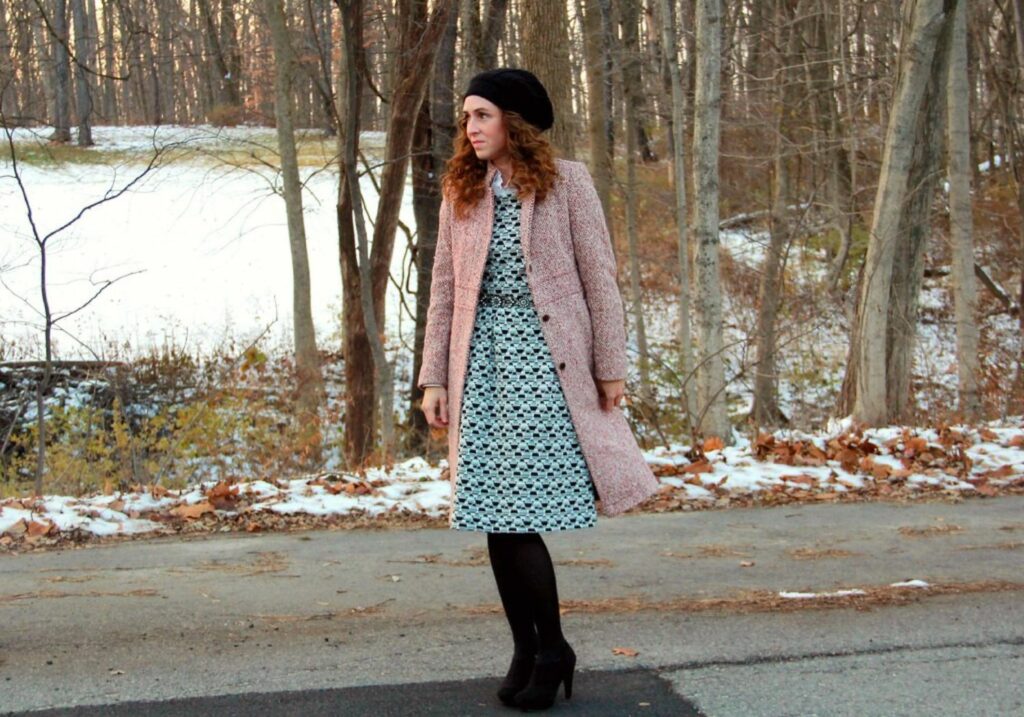
Leggings or tights under a knitted skirt or dress can be a cute outfit on milder days or if you don’t plan to spend a lot of time outdoors or are just going for dinner.
Sweater dresses like this one or a velvet skirt paired with a cable knit sweater are classy and comfortable alternatives to trousers for days where you’re walking around a museum or spending more time indoors.
Footwear
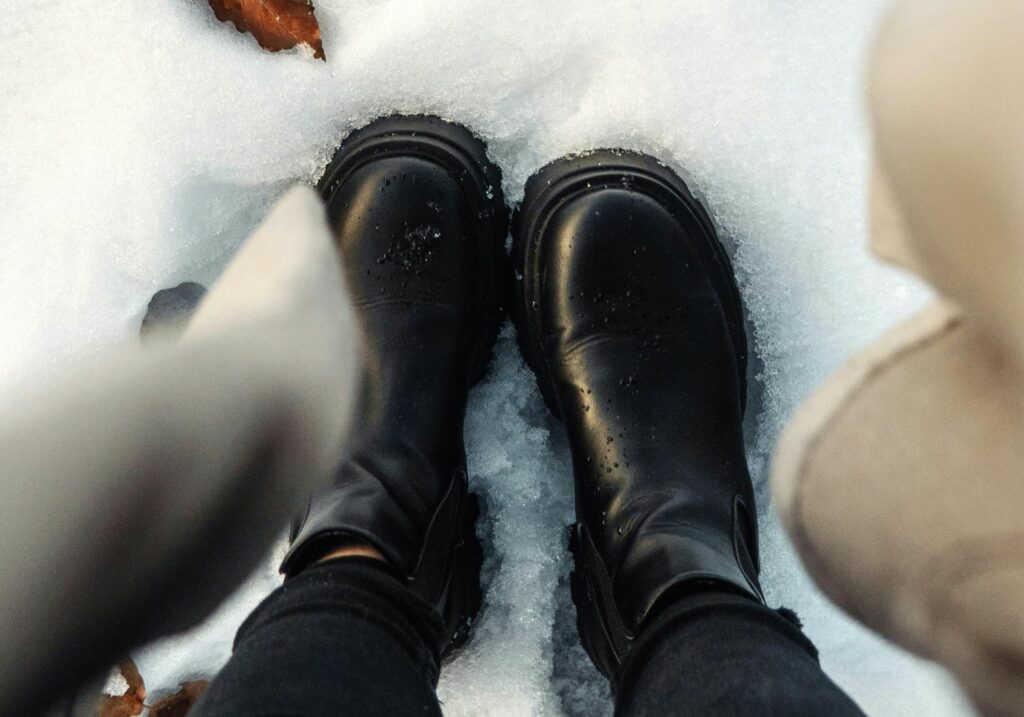
Another important item that will make or break your Christmas markets trip is the footwear you bring along.
Your feet will be the first thing to get cold without the proper pair of shoes, and cold feet (literally) can be a painful and uncomfortable experience that might ruin your once-in-a-lifetime opportunity to stroll through the endless rows of market stalls in the cutest European cities and towns.
Your boots will need to have tread on them to walk safely through the potentially icy streets – you want to end up at a cozy tavern with a cup of glühwein in hand, not the hospital.
A good pair of high leather boots will be your best friend on a trip like this, they not only keep your feet warm but also your legs.
A pair of fleece or fur-lined Dr. martin’s boots are the perfect choice to keep you warm and make a fashion statement.
If you’re less concerned with the style, and more about the warmth or comfort of a boot, these hiking-esque boots will keep your feet comfortable and toasty all day (and night) long. These boots or these ones, are waterproof, comfortable and warm, and will give the vibe of an Ugg boot but the traction of a winter boot.
NOTE: If you are buying a new pair of boots for your trip, remember to break them in and wear them out before the trip so they don’t cause blisters. Better yet, consider borrowing a pair from a friend if you don’t think you’ll be using them again.
Bags and anti theft purses
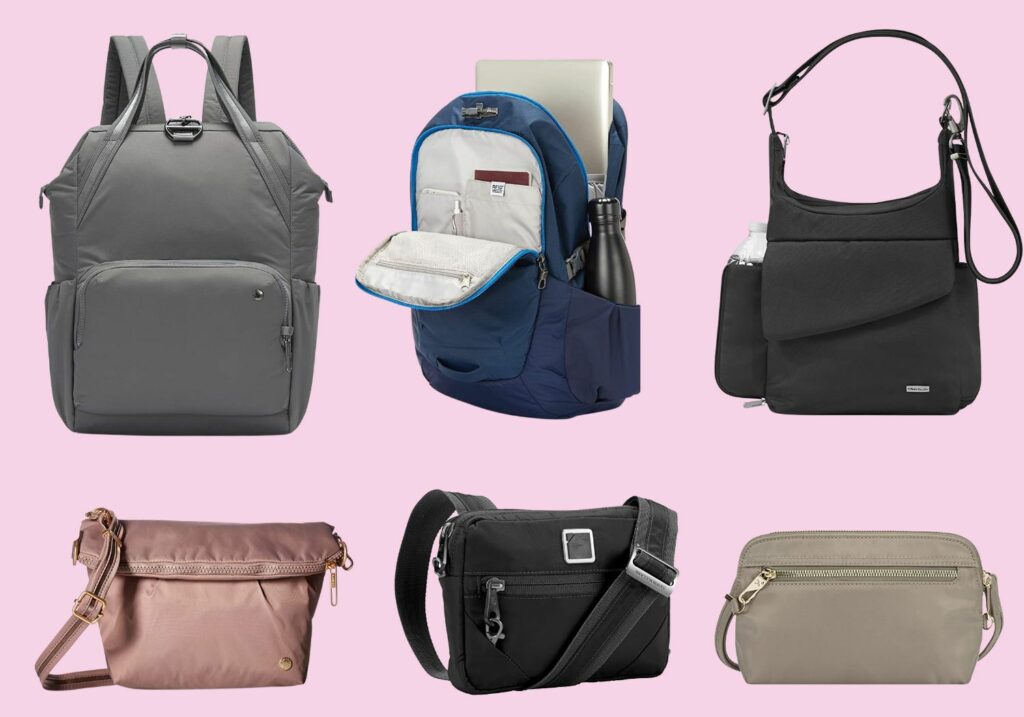
Even though the countries within Central Europe are consistently listed as some of the safest destinations for solo female travelers, always keep your valuables safe and your bag in the front and zipped. Slash and theft proof cross-body bags like the ones we listed on this article are a great idea, and in crowded areas, keep your arm on your bag’s zipper for extra protection.
If something does happen to you, it’s likely that you won’t even notice, but look out for situations where people are trying to distract you by trying to sell you something, talking to you or drawing your attention to anything while someone else steals your wallet or phone.
Read our full article on safety tips here.
Want to know how to stay safe and prevent a negative experience or encounter on your travels? Check out EMPOWERFUL, a series of 35+ sessions, 40+ experts and over 50+ hours of learning via masterclasses, panel discussions, and inspiring interviews to empower YOU to travel solo!
Warm accessories
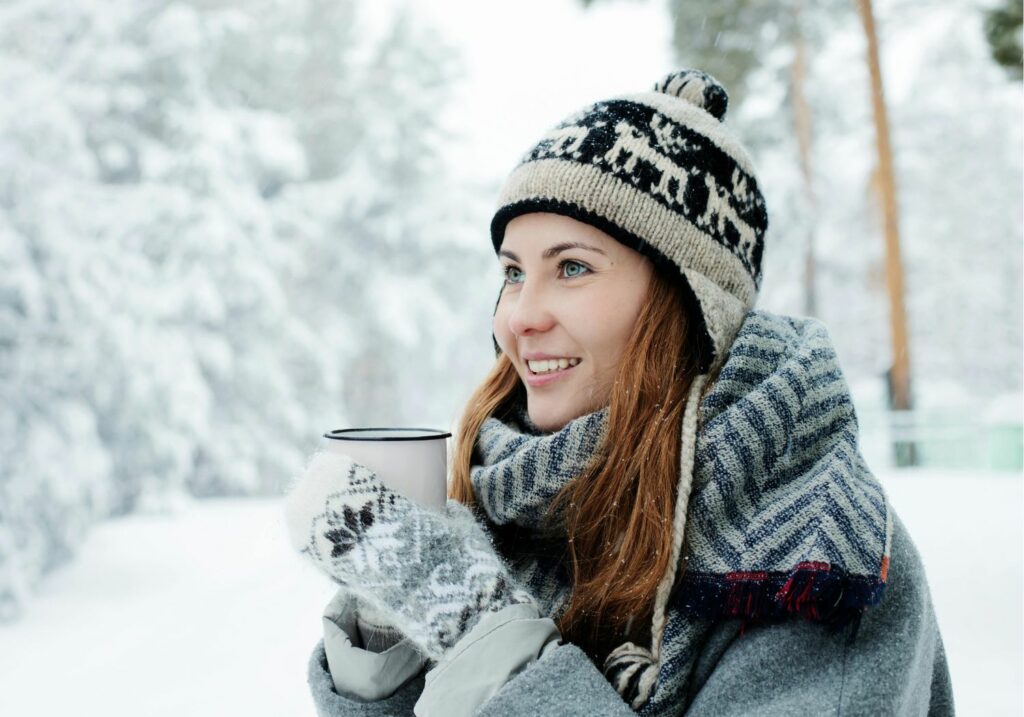
The clothing accessories you wear are arguably just as important as your layers, and it’s a great opportunity to jazz up an otherwise plain outfit. These accessories will help you stay warm and look good while doing it:
- Gloves: Gloves are super important on a trip like this, so you can take a photo or hold your coffee or mulled wine without freezing your hands off. A nice pair of leather, fleece/fur-lined gloves will keep you warm and fashionable and last a lifetime. You could also opt for a more heavy-duty pair of waterproof gloves that work with touch screens so you don’t have to take them off to use your phone, like these ones.
- Scarf: Even if you’re wearing a high neck layer, a thinner merino wool scarf can add that extra warmth and protect your face from the cold. An oversized knitted scarf or a blanket scarf will give you an extra layer to add or take off as needed.
- Hat: It’s very important to keep your head warm, especially if it starts snowing or raining. I like Icebreakers’ merino wool beanie hats, but I’m also partial to the nice lined knit beanies, especially the fleece or fur-lined ones. Just remember that it may be hard to pull your hoodie over your hat if it has a pompom.
- Earmuffs: If you don’t like the bulkiness of a hat or beanie, earmuffs or a warm headband are really cute options to add to any outfit, while keeping your ears warm! A fluffy pair like these go over your ears, while this pair goes around your neck for a more inconspicuous look.
- Wool / thermal socks: These are SO important, and will make sure your feet stay warm all the time. I like to pack thick and tall merino wool ones or warm and fuzzy socks that also keep your feet from blistering. These cute ones peeking out of your boots and over a pair of leggings would also be so cute while keeping your feet nice and warm. Make sure that, if you buy lined socks, your feet will still fit in your boots.
Swimsuit
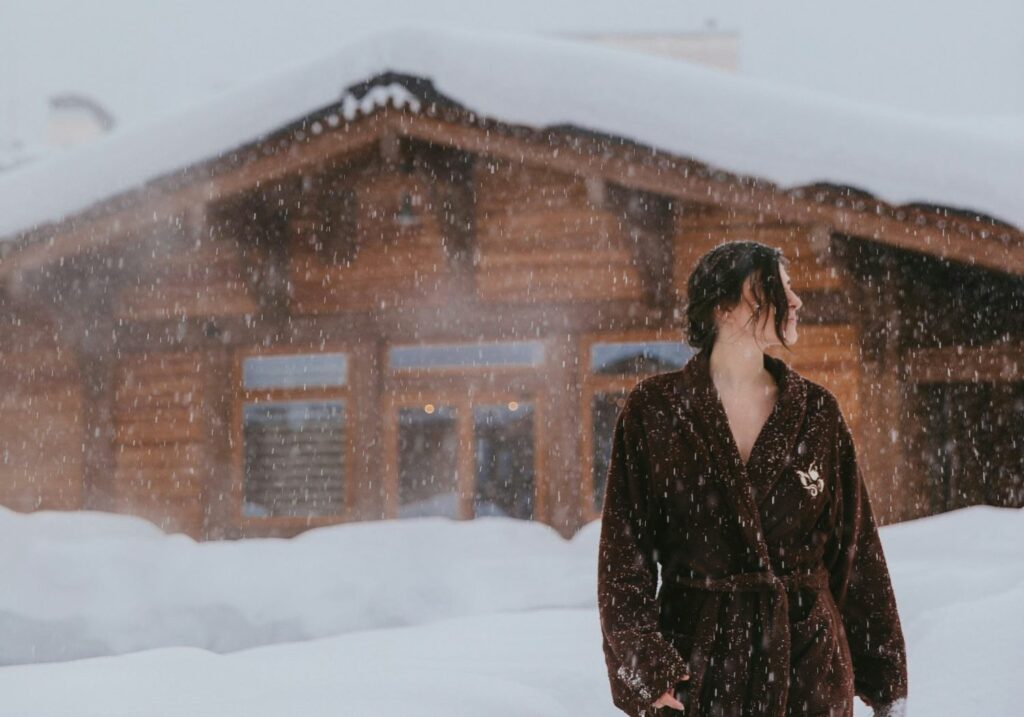
Central Europe boasts some of the best thermal spas in the world, and we visit the Bad Regaz thermal spa for some maxing and relaxing on our Christmas market tour.
Chances are you’ll want to get to a thermal spa to warm up as well, so don’t forget your bikini or a swimming suit!
Other items you should pack for your Christmas markets trip
| Hand and feet warmers: These magical inserts work much like the heat pads used in case of an injury only they are much more powerful. You break the liquid inside and stick them to your shoe insoles, and put on thick socks to keep your feet warm for hours. You can also keep some inside your jacket pockets, but make sure not to touch them with bare hands but always with your gloves on. Check these out. | |
| Universal plug adaptor: Plugs in Europe are two-pronged and round. The best way to ensure you will be able to use any plug is by packing a universal adaptor. I like the ones which come with USB ports so that I can charge phones, cameras and everything else with just one adaptor. I love this one because it has USB ports for all the electronics I now carry. | |
| Power bank: A portable charger can be an essential on long days exploring quaint and charming towns that may not have power outlets readily available everywhere – let alone that your devices may lose battery power faster due to the cold. This Anker Portable Charger has a 20000mAh capacity, and fast-charging USB-C ports, you can power up your devices in a flash, while the LED display keeps you in the know about your battery level. | |
| Sunglasses: With 9 hours of sunlight a day at this time, the sun can reflect off of any snow and make things brighter than they would normally be, making sunglasses essential for protecting the eyes from harmful UV rays and glare. Try these ones out to protect your eyes in style. | |
| Water bottle: Single use plastic bottles are terrible for the environment so I recommend you bring your own reusable bottle as part of our efforts towards zero-waste and responsible travel. Tap water in Europe is safe to drink. | |
| Sunscreen: One of the most important items in this packing list is sunscreen. Despite it being winter, and cold, the sun is very strong, and reflective on surfaces like snow. Even though you will be mostly covered while outdoors, we recommend applying sunscreen to your face and other exposed skin. This helps protect the skin from sunburn, premature aging, and reduces the risk of skin cancer, ensuring safe enjoyment of outdoor activities. I like and use Biore SPF 50++++ for my face because you can wear it under makeup and it is non-sticky and silky smooth. | |
| Body lotion: The hotels you will stay at might provide their own but it might be best to bring your favorite brand. My sister gifted me a Body Shop Christmas Advent calendar that came with many of their products to try and this 96h hydration body butter is amazing. It comes in a flat recycled plastic tub with an aluminum lid that’s super easy for travel and anti-spill (I can testify to that since I’ve traveled a few countries with it). | |
| Lip balm: Lip balm is essential in colder weather to prevent dry and chapped lips. This Nivea one comes in a pack of 4 and has SPF, so your lips will never be dry again! | |
| Sleep mask: If you’re a light sleeper, and can’t handle any light coming in from the hotel halls, or the twinkling Christmas lights shining in through your window, guarantee your sanity and a good night’s sleep by bringing your own mask like this one to block the light. | |
| Pyjamas: On our tours, we pair you up with a fellow solo female traveler that we think you’ll get along with – so don’t forget to pack your pajamas! Here’s a comfy choice from Amazon. | |
| Ear plugs: If you are a light sleeper, a pair of ear plugs can help you sleep better. Check these out on Amazon. | |
| First aid kit and medication: Available medications, brands and products in Central Europe may not be the same as back home, so it’s always best to bring everything you are used to and of course, all prescription medication or vitamins you take. You should also think about packing a basic first aid kit with items such as painkillers, plasters and antiseptic ointment, motion sickness tablets, antihistamines, electrolyte powder in case of diarrhea (or hangovers form all the mulled wine), plus any other tummy ache related tablets or medicines your doctor may suggest (antacid, diarrhea tablets, etc.). Don’t forget blister bandages in case you get blisters in your winter boots. See our First Aid Kit list here. | |
| A foldable toiletry bag: I always travel with a foldable toiletry bag which I can hang anywhere. They also help you keep everything easy to find and tidy. This one is very cute and functional! |
What not to bring to a Christmas markets trip
Because of how variable the weather can be during November and December, there are a few things that you should reconsider bringing along with you to Central Europe:
- Heels: While heels are very cute, and the streets and sidewalks will be relatively well maintained in cities like Munich, Zurich and Vienna, the risk of slipping on the ice, getting your feet wet in the rain or breaking an ankle while walking on the snowy cobblestone streets may outweigh any upsides from wearing heels. Consider a stylish boot with soles that have some tread instead.
- Hair dryers: All the hotels we stay at on our tour have them, so add another layer or two with the space you’ll save.

